One, FPGA principle
The basic logic unit in FPGA is the CLB module. A CLB module generally contains several basic lookup tables, registers, and multiplexer resources. Therefore, the logic expressions in FPGA are based on LUTs.
The programming information inside the FPGA is generally stored in the SRAM unit, so the usual FPGA is based on SRAM, so the information will be lost after power-off, and the next power-on needs to be configured before it can be used.
Focus on Xilinx FPGA,
2. Speed ​​grade of FPGA products
The speed grade generally reflects the performance of a chip. The higher the speed grade, the smaller the logic delay and wiring delay in the chip, the easier it is to meet the performance requirements of the design, and the greater the cost.
For Xilinx FPGAs, the speed grades are generally "-1", "-2", "-3", etc. The larger the number, the higher the speed grade, and the more expensive the chip.
For Intel FPGAs, the speed grades generally have "-6", "-7", and "-8". The smaller the number, the higher the speed grade and the more expensive the price.
Three, FPGA internal resources
Logic resource block is the most important resource inside FPGA, Xilinx calls it CLB (configurable logic block);
In the 7 series, there are three main resources inside the FPGA: programmable logic unit, programmable I/O unit, and wiring resources
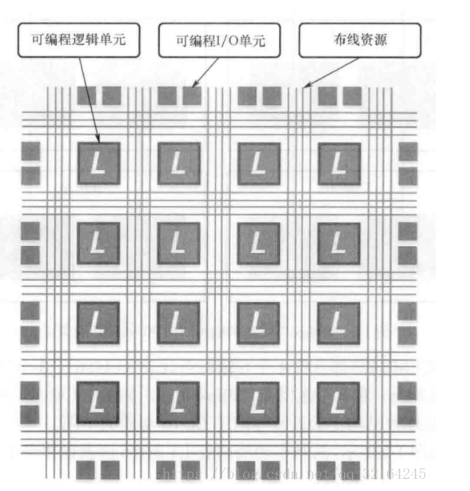
1. Configurable logic block
CLB is the most abundant in FPGA and consists of two SLICEs. SLICE is divided into SLICEL (L:Logic) and SLICEM (M:Memory), so CLB can be divided into CLBLL and CLBLM;
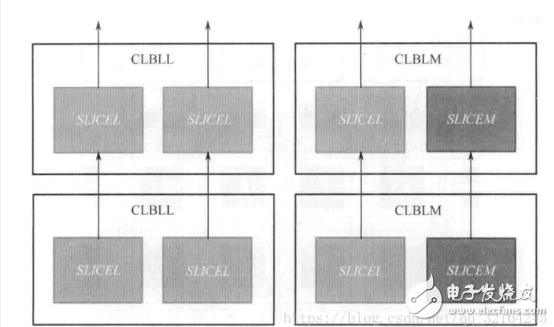
Both SLICEL and SLICEM contain 4 6-input lookup tables (LUT6), 3 data selectors (MUX), 1 carry chain (carry chain) and 8 flip-flops (Flip-Flop);
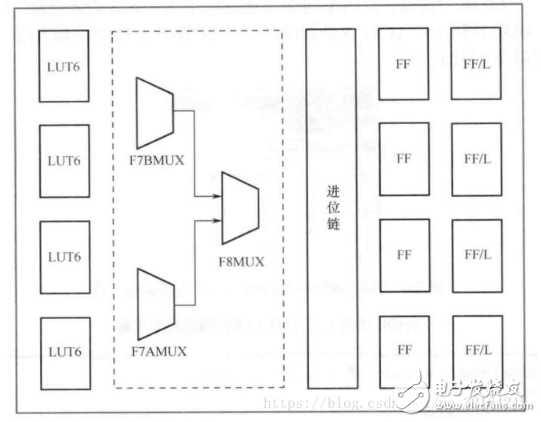
2. Storage unit (Block RAM)
Block RAM can be configured as synchronous, asynchronous, single-port, dual-port RAM or FIFO, or ROM;
3. Operation unit (DSP48E1)
When FPGA needs complex operations, it will use DSP48E1, such as multiplication;
What is STM32?STMicroelectronics (ST) Group was established in June 1988 by the merger of Italy’s SGS Microelectronics and French Thomson Semiconductor. In May 1998, SGS-THOMSON Microelectronics changed its company name to STMicroelectronics Co., Ltd., one of the world's largest semiconductor companies. The STM32 series is based on the ARM Cortex®-M0, M0+, M3, M4 and M7 cores (ST's product portfolio contains a comprehensive range of microcontrollers, from robust, designed for embedded applications that require high performance, low cost, and low power consumption). low-cost 8-bit MCUs up to 32-bit ARM-based Cortex®-M0 and M0+, Cortex®-M3, Cortex®-M4 Flash microcontrollers with a great choice of peripherals. ST has also extended this range to include an ultra -low-power MCU platform).
It has the following three characteristics:
• New 32-bit MCU series based on ARM core
–Standard ARM architecture – The core is the Cortex-M core specially designed by ARM for embedded applications requiring high performance, low cost and low power consumption
• Advanced architecture
-High performance-Low voltage-Low power consumption-Innovative core and peripherals
•Easy to use/free/low risk
Cortex-M3 series belong to ARMv7 architecture
The ARMv7 architecture defines three series with a clear division of labor:
"A" series: For cutting-edge virtual memory-based operating systems and user applications
"R" series: for real-time systems;
"M" series: for microcontrollers.
STM32F1 belongs to the Cortex-M3 core in the Cortex-M series and adopts the ARMv7-M architecture. STM32F4 belongs to the Cortex-M4 series and adopts the ARMv7-ME architecture. Cortex-A5/A8 uses ARMv7-A architecture. The traditional ARM7 series uses the ARMv4T architecture.
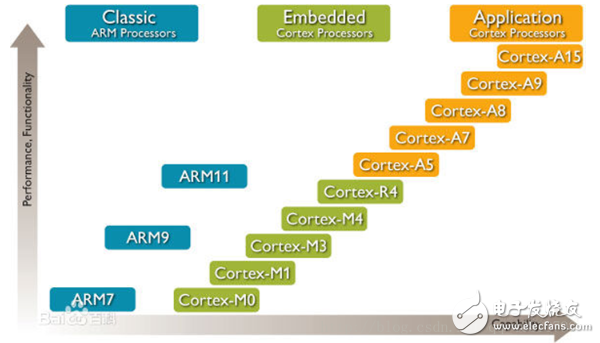
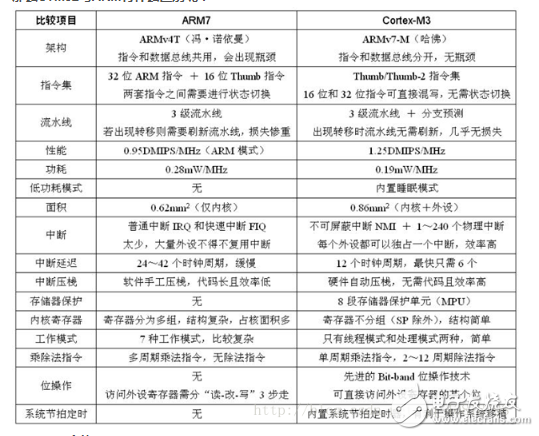
Cortex-M family
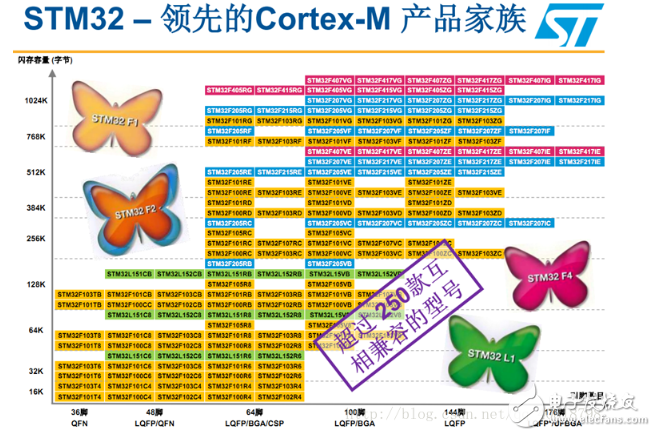
What is the difference between STM32 and ARM
STM32 naming rules
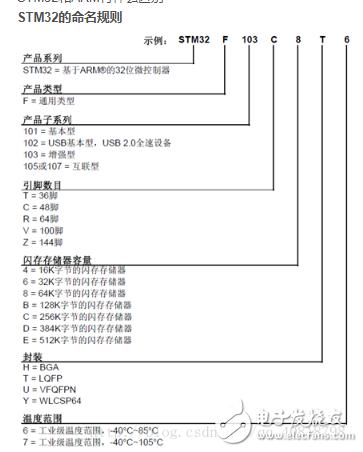
STM32 application scenarios
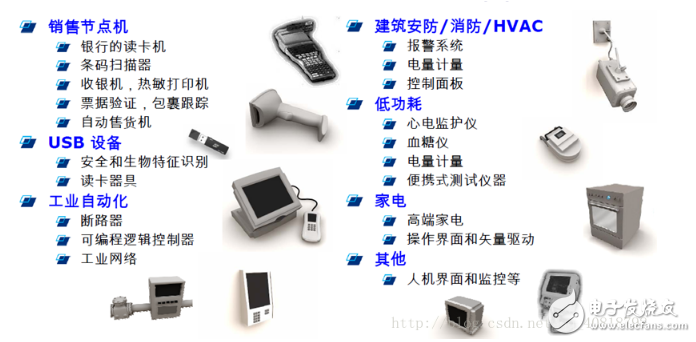
There are many more application scenarios for STM32, here are just a few.
In general, STM32 has the following advantages:
1) Extremely high performance: mainstream Cortex core.
2) Abundant and reasonable peripherals, reasonable power consumption, and reasonable price.
3) Powerful software support: rich software packages.
4) Comprehensive and rich technical documentation.
5) There are many types of chip models and wide coverage.
6) Strong user base: The company that was the first to successfully test the CM3 chip has accumulated a large number of user groups to pave the way for it.
The advantages and disadvantages of stm32 and fpgaOne belongs to the STM32 microcontroller and the other belongs to the programmable array FPGA.
STM32 is easy to operate due to various peripherals and can process analog and digital signals. The FPGA control circuit suitable for design is also widely used. It can only process digital signals, but it can run multiple instructions at the same time, that is, parallel execution. It is incomparable with single-chip microcomputer and ARM, and is mainly used to process various logics.
STM32 represents the 32-bit microcontroller of the ARM Cortex-M core. It has the advantages of high performance, strong real-time performance, low power consumption, and easy low-voltage operation. It is also easy to develop.
According to the core architecture, there are STM32F103 "enhanced" series, STM32F101 "basic" series, STM32F105, STM32F107 "interconnected" series. Among them, the enhanced series has a clock frequency of 72MHz, which is the highest performance product among similar products; the basic clock frequency is 36MHz, which has a significantly higher performance than 16-bit products at the price of 16-bit products, and is the best choice for users of 32-bit products . Both series have built-in 32K to 128K flash memory, the difference is the combination of the maximum capacity of SRAM and the peripheral interface. When the clock frequency is 72MHz, the code is executed from the flash memory, and the STM32 consumes 36mA, which is the lowest power consumption product on the 32-bit market, equivalent to 0.5mA/MHz.
FPGA is the abbreviation of English Field-Programmable Gate Array, that is, field programmable gate array. It is a product of further development on the basis of programmable devices such as PAL, GAL, and CPLD. It emerged as a semi-custom circuit in the field of application-specific integrated circuits (ASIC), which not only solves the deficiencies of custom circuits, but also overcomes the shortcomings of the limited number of gate circuits of the original programmable devices. FPGA adopts a new concept of logic cell array LCA (Logic Cell Array), which includes three parts: Configurable Logic Block (CLB), IOB (Input Output Block) and Interconnect.
The new energy battery materials developed and mass-produced by DADNCELL mainly include electrolytes for lithium batteries-high-purity crystalline lithium hexafluorophosphate, lithium tetrafluoroborate, lithium perchlorate, electrolyte additives and its anode materials, ultra-thin lithium ribbons; lithium carbon fluoride The core cathode material of the battery-functional carbon fluoride materials (customized micro-fluorinated, moderately fluorinated and other fluorinated carbon materials with different degrees of fluorination); the key material of thermal batteries-lithium boron alloy and lithium silicon alloy.
New Energy Battery Materials,Lithium Hexafluorophosphate,Electrolyte Lithium Hexafluorophosphate (Lipf6)Cas:21324-40-3,Fluorinated Carbon Cathode Material
Shandong Huachuang Times Optoelectronics Technology Co., Ltd. , https://www.dadncell.com
